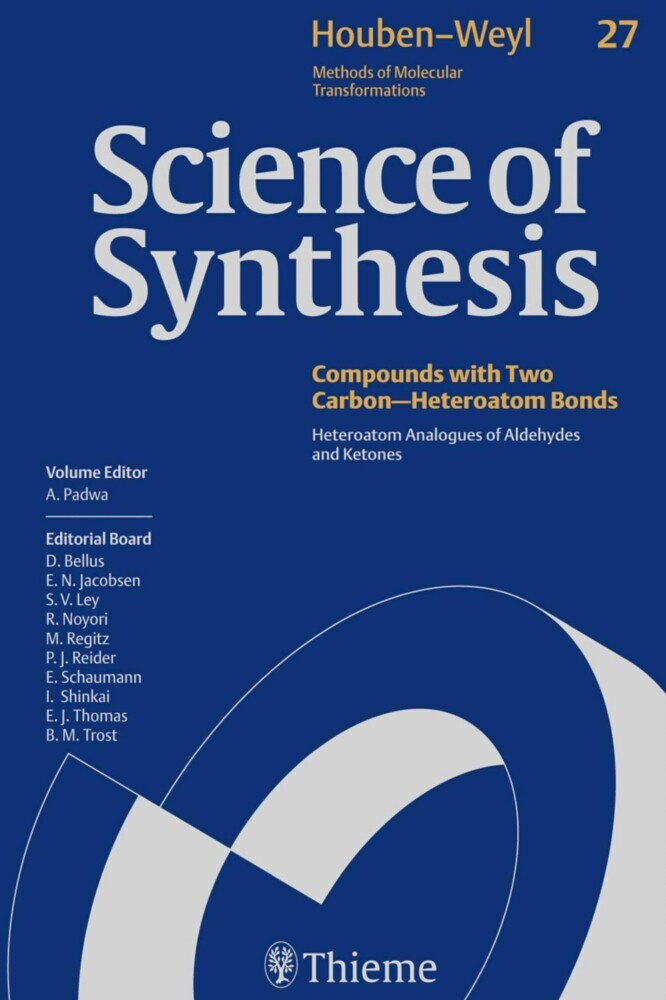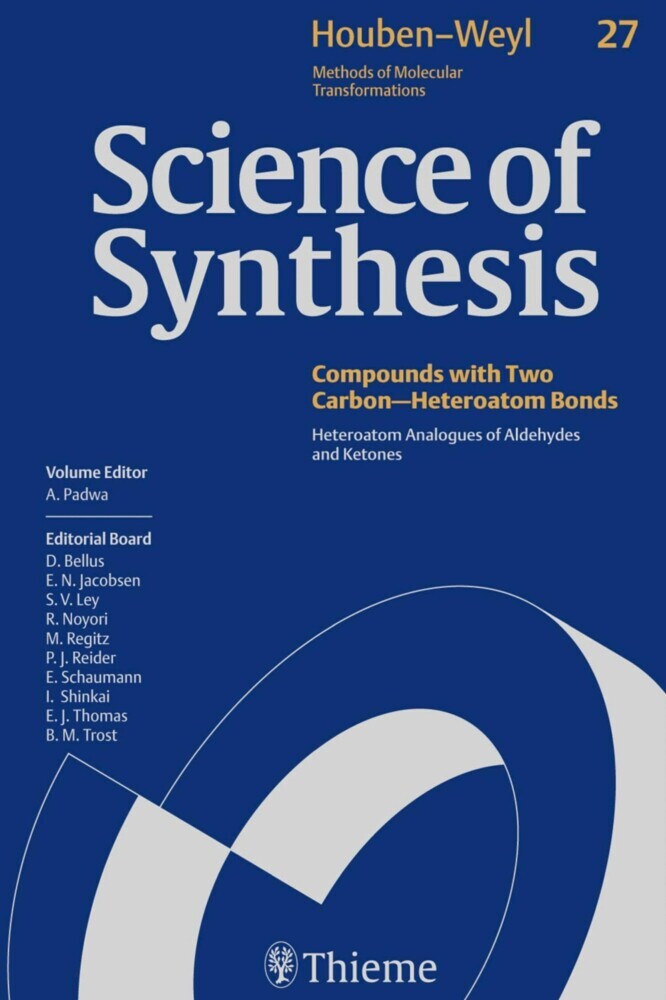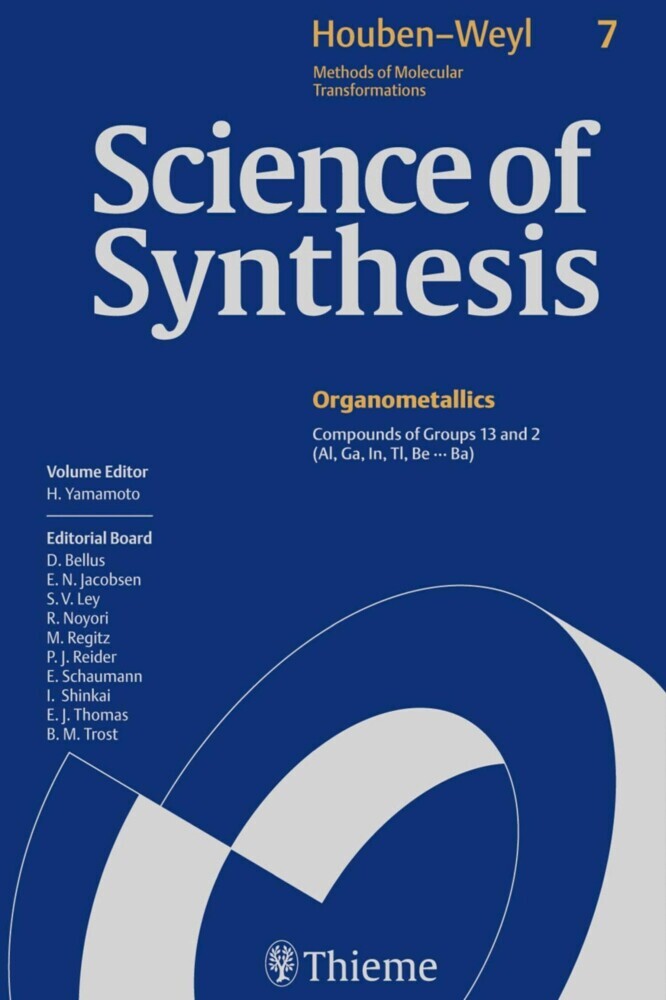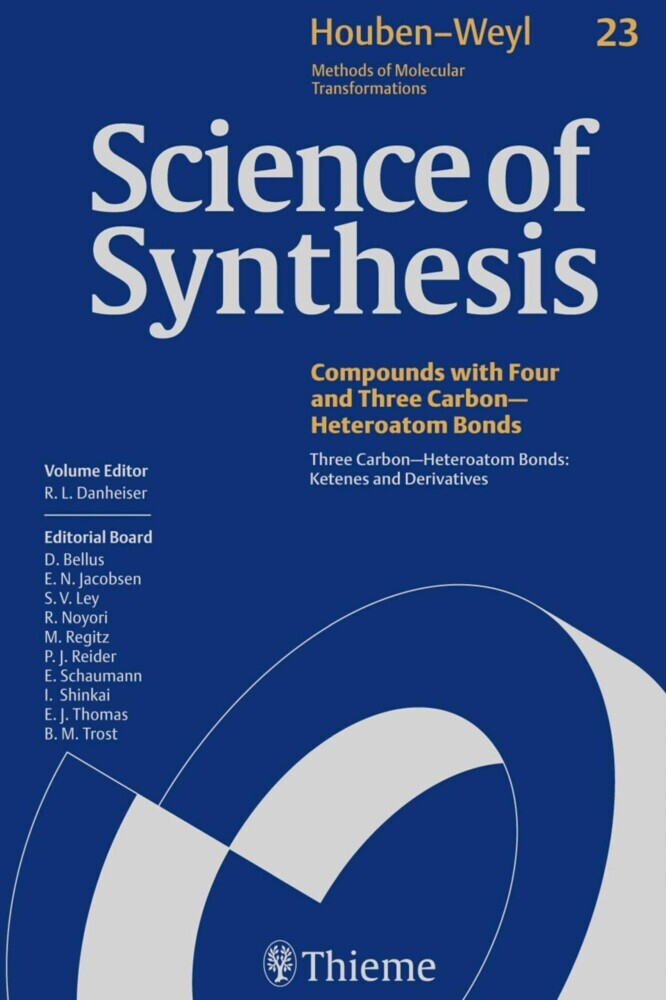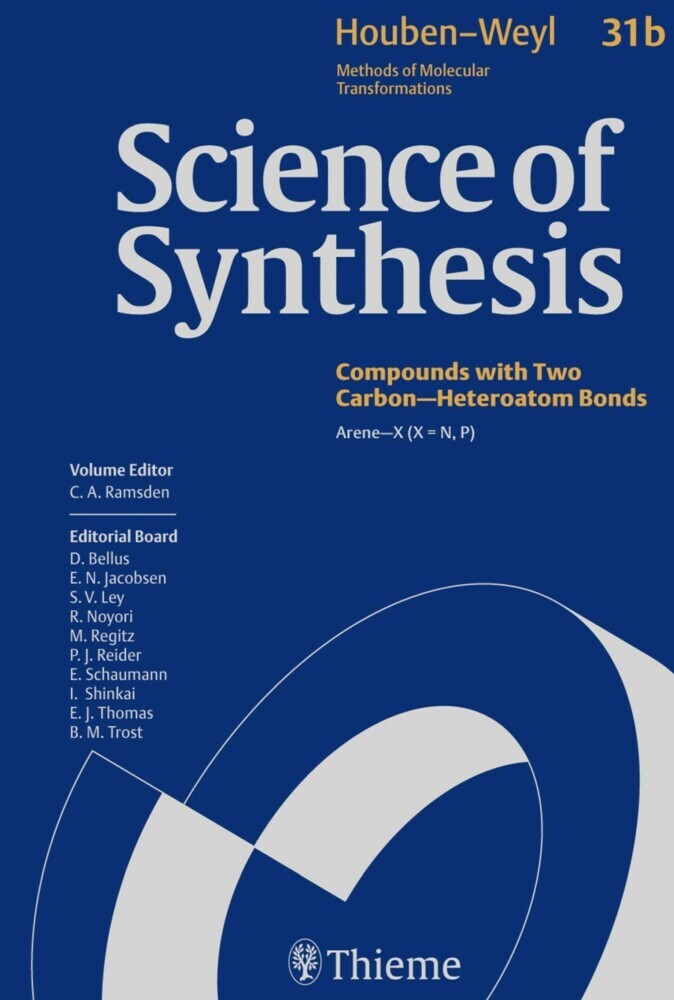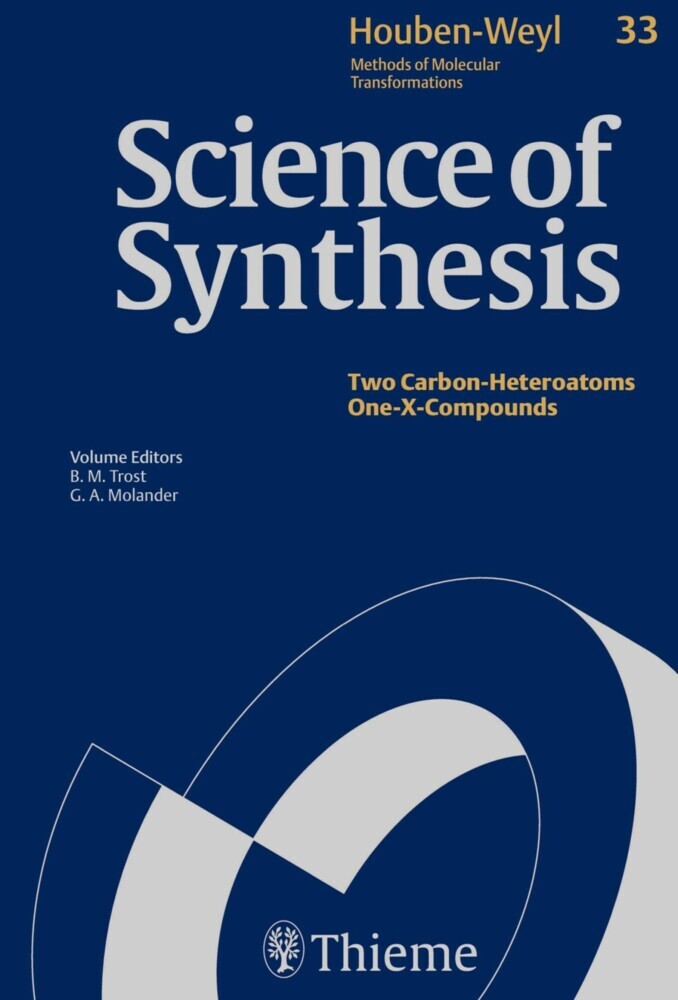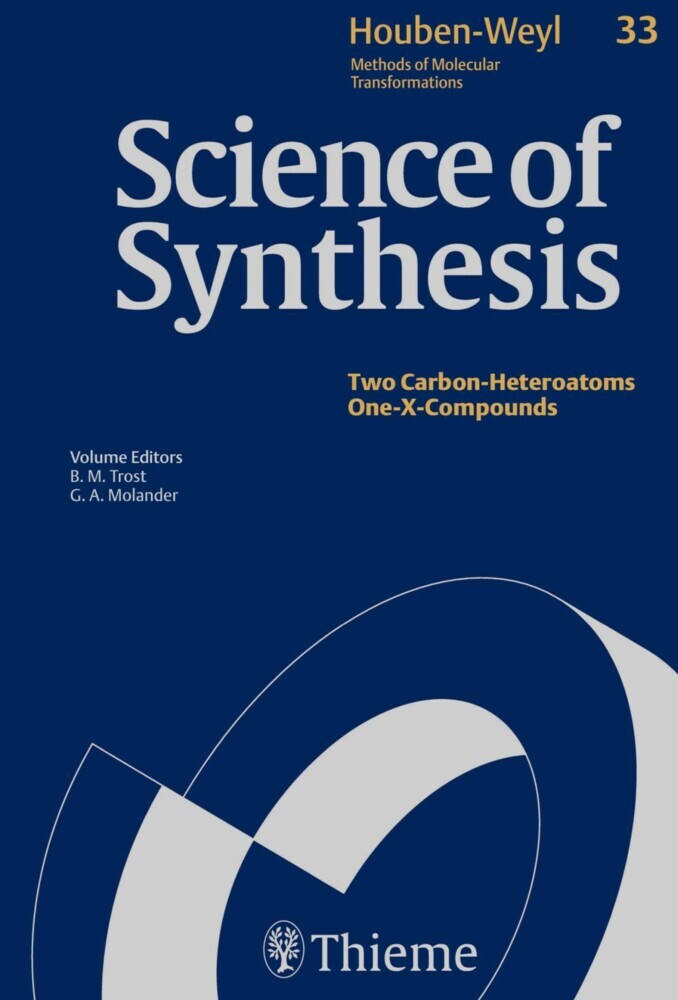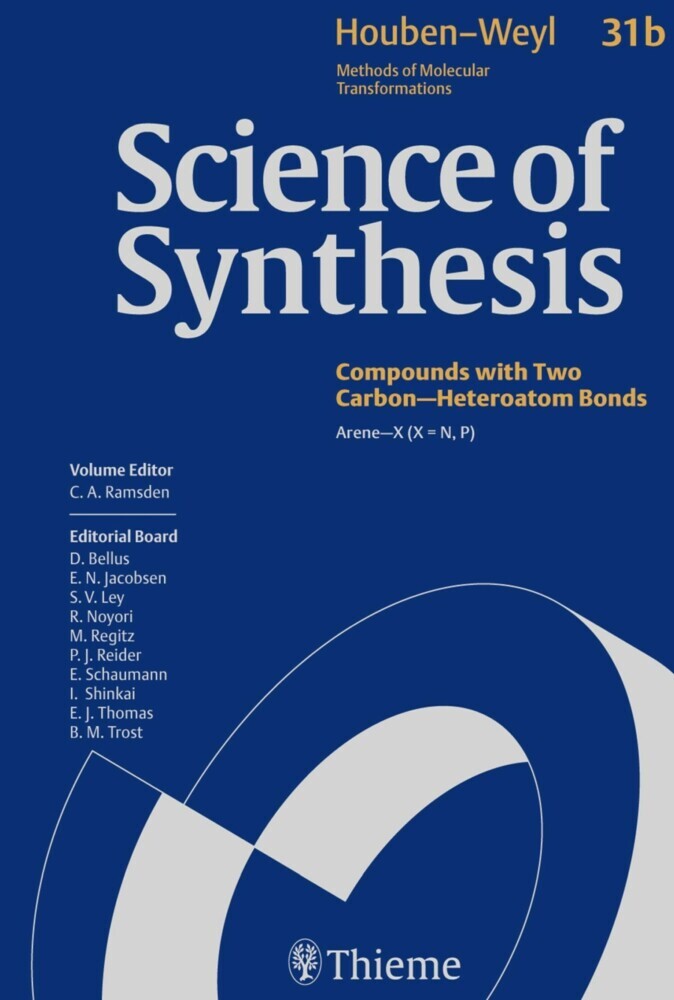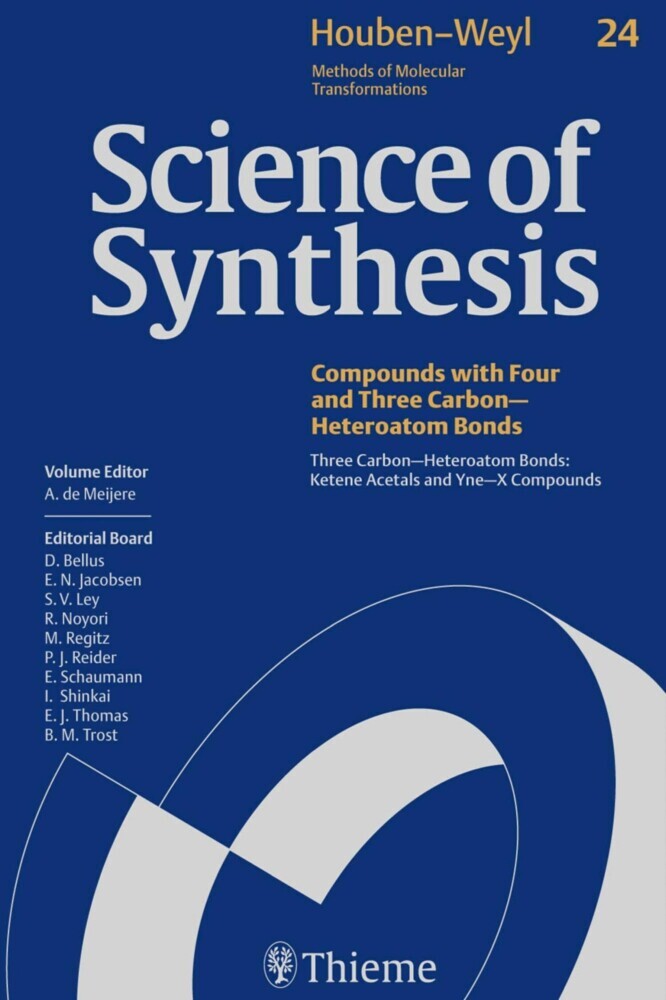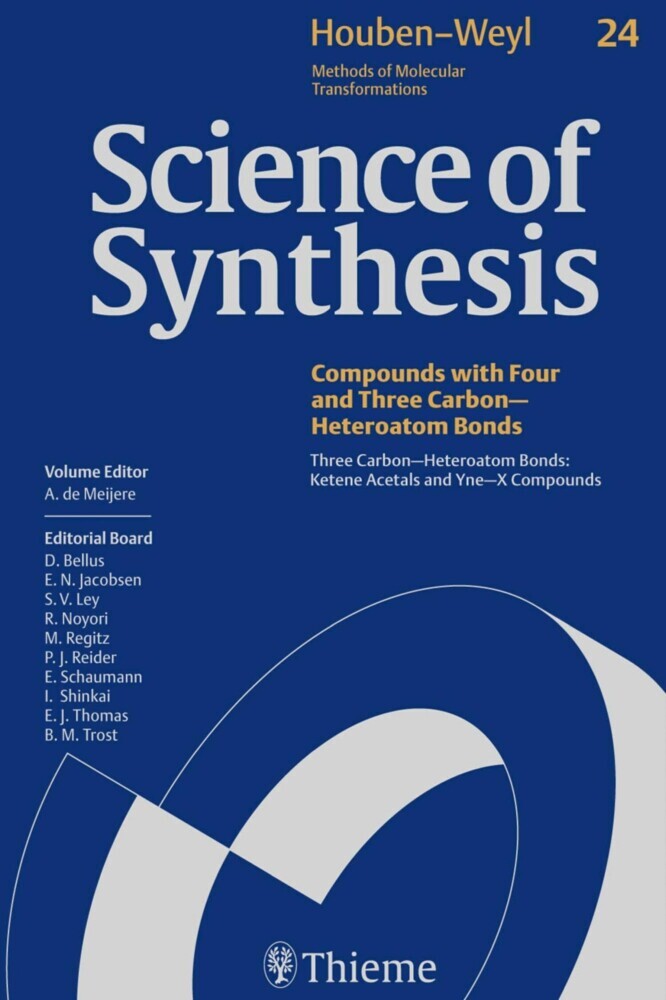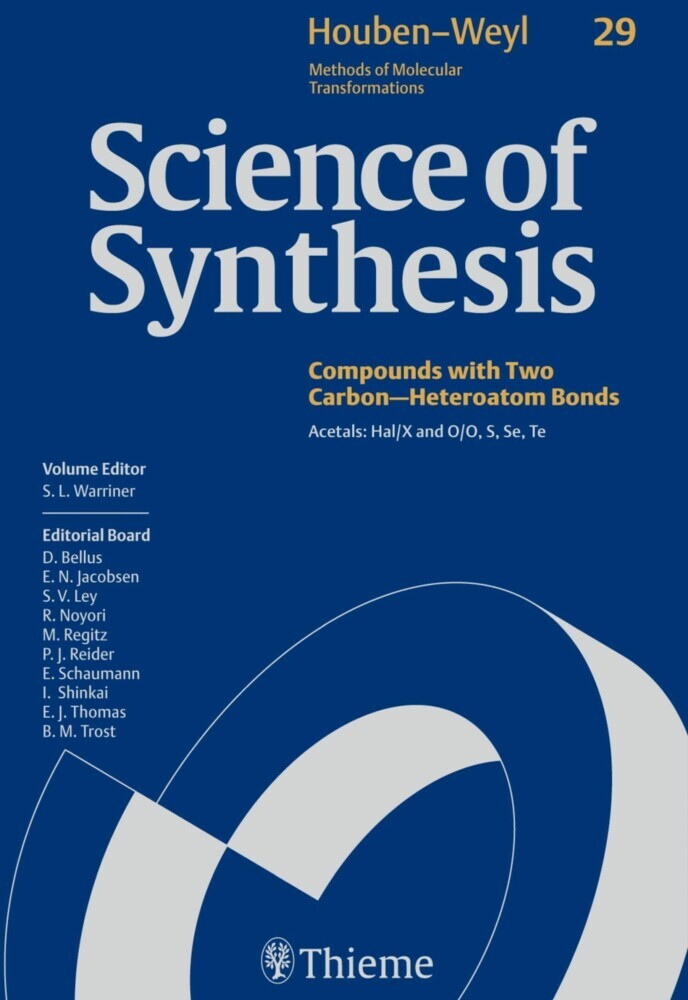Science of Synthesis: Houben-Weyl Methods of Molecular Transformations Vol. 27
Science of Synthesis: Houben-Weyl Methods of Molecular Transformations Vol. 27
Turning Information Into Knowledge
Science of Synthesis: Houben-Weyl Methods of Molecular Transformations is the entirely new edition of the acclaimed reference series Houben-Weyl, the standard synthetic chemistry resource since 1909. This new edition is published in English and will comprise 48 volumes published between the years 2000 and 2008.
Science of Synthesis is a quality reference work developed by a highly esteemed editorial board to provide a comprehensive and critical selection of reliable organic and organometallic synthetic methods. This unique resource is designed to be the first point of reference when searching for a synthesis strategy.
Features:
- Contains the expertise of presently 400 leading chemists worldwide.
- Critically evaluates the preparative applicability and significance of the synthetic methods.
- Discusses relevant background information and provides detailed experimental procedures
For full information on the Science of Synthesis series, visit the Science of Synthesis Homepage
Series Editors: D. Bellus, S. V. Ley, R. Noyori, M. Regitz, E. Schaumann, I. Shinkai, E. J. Thomas, B. M. Trost, P. J. Reider
Albert Padwa
1;Science of Synthesis - Volume 27: Heteroatom Analogues of Aldehydes and Ketones;11.1;Title page;31.2;Imprint;51.3;Preface;61.4;Volume Editor's Preface;81.5;Overview;101.6;Table of Contents;121.7;Introduction;421.8;27.1 Product Class 1: Sulfur Ylides;621.8.1;27.1.1 Product Subclass 1: Thiocarbonyl Ylides;641.8.1.1;27.1.1.1 Synthesis of Product Subclass 1;651.8.1.1.1;27.1.1.1.1 Method 1: By Deprotonation of Sulfonium Salts;651.8.1.1.2;27.1.1.1.2 Method 2: By 1,3-Elimination Reactions;661.8.1.1.2.1;27.1.1.1.2.1 Variation 1: Thermal Decomposition of Bis[(trimethylsilyl)methyl] Sulfoxides;671.8.1.1.2.2;27.1.1.1.2.2 Variation 2: 1,3-Elimination of Halotrimethylsilanes;671.8.1.1.3;27.1.1.1.3 Method 3: By Extrusion of Nitrogen from 2,5-Dihydro-1,3,4-thiadiazoles;681.8.1.1.3.1;27.1.1.1.3.1 Variation 1: Extrusion of Nitrogen from Stable 2,5-Dihydro-1,3,4-thiadiazoles;691.8.1.1.3.2;27.1.1.1.3.2 Variation 2: Extrusion of Nitrogen from 2,5-Dihydro-1,3,4-thiadiazoles Generated In Situ from Thiocarbonyl Compounds and Diazo Compounds;691.8.1.1.4;27.1.1.1.4 Method 4: By Addition of Carbenes and Carbenoids to Thiocarbonyl Compounds;701.8.1.1.4.1;27.1.1.1.4.1 Variation 1: By Reaction with Dihalocarbenes;701.8.1.1.4.2;27.1.1.1.4.2 Variation 2: Generation of Carbenes by Metal-Catalyzed Decomposition of Diazo Compounds;711.8.1.1.4.3;27.1.1.1.4.3 Variation 3: Generation of Thiocarbonyl Ylides from Phenyliodonium Ylides;721.8.1.2;27.1.1.2 Applications of Product Subclass 1 in Organic Synthesis;721.8.1.2.1;27.1.1.2.1 Method 1: Synthesis of Five-Membered Sulfur-Containing Heterocycles by 1,3-Dipolar Cycloaddition;731.8.1.2.1.1;27.1.1.2.1.1 Variation 1: From Thiocarbonyl Ylides Generated by Deprotonation of Sulfonium Salts;731.8.1.2.1.2;27.1.1.2.1.2 Variation 2: From Thiocarbonyl Ylides Generated by 1,3-Elimination of Halotrimethylsilane;751.8.1.2.1.3;27.1.1.2.1.3 Variation 3: From Thiocarbonyl Ylides Generated by Cycloreversion of 2,5-Dihydro-1,3,4-thiadiazoles;761.8.1.2.2;27.1.1.2.2 Method 2: Synthesis of Sulfides, Thioacetals, Dithioacetals, and Thioaminals from 1,3-Addition Reactions of Thiocarbonyl Ylides;781.8.1.2.2.1;27.1.1.2.2.1 Variation 1: From Thiocarbonyl Ylides Generated by Cycloreversion of 2,5-Dihydro-1,3,4-thiadiazoles;791.8.1.2.3;27.1.1.2.3 Method 3: Synthesis of Thiiranes by 1,3-Electrocyclization Reactions of Thiocarbonyl Ylides;791.8.1.2.3.1;27.1.1.2.3.1 Variation 1: From Thiocarbonyl Ylides Generated by Extrusion of Nitrogen from 2,5-Dihydro-1,3,4-thiadiazoles;801.8.1.2.3.2;27.1.1.2.3.2 Variation 2: From Thiocarbonyl Ylides Generated by Addition of Carbenes to Thiocarbonyl Compounds;811.8.1.2.3.3;27.1.1.2.3.3 Variation 3: By Transition-Metal-Catalyzed Decomposition of Diazo Compounds;811.8.1.2.4;27.1.1.2.4 Method 4: Synthesis of 1,3-Oxathiole Derivatives by 1,5-Electrocyclization Reactions of Thiocarbonyl Ylides;831.8.2;27.1.2 Product Subclass 2: Sulfoxonium Ylides;831.8.2.1;27.1.2.1 Synthesis of Product Subclass 2;841.8.2.1.1;27.1.2.1.1 Method 1: By Deprotonation of Sulfoxonium Salts;841.8.2.1.1.1;27.1.2.1.1.1 Variation 1: In Organic Solvents;841.8.2.1.1.2;27.1.2.1.1.2 Variation 2: In a Biphasic System;851.8.2.1.2;27.1.2.1.2 Method 2: By Hydrogen Atom Substitution of Existing Sulfoxonium Ylides;851.8.2.1.2.1;27.1.2.1.2.1 Variation 1: Synthesis of Carbonyl-Stabilized Sulfoxonium Ylides;861.8.2.1.2.2;27.1.2.1.2.2 Variation 2: Synthesis of Thiocarbonyl-Stabilized Sulfoxonium Ylides;871.8.2.1.2.3;27.1.2.1.2.3 Variation 3: Synthesis of Imide- and Imine-Stabilized Sulfoxonium Ylides;871.8.2.1.2.4;27.1.2.1.2.4 Variation 4: Synthesis of Aryl- or Hetaryl-Stabilized Sulfoxonium Ylides;881.8.2.1.2.5;27.1.2.1.2.5 Variation 5: Synthesis of Cyano-Stabilized Sulfoxonium Ylides;881.8.2.1.2.6;27.1.2.1.2.6 Variation 6: Synthesis of Vinyl-Stabilized Sulfoxonium Ylides;891.8.2.1.3;27.1.2.1.3 Method 3: Reaction of Sulfoxides with Carbenes;891.8.2.1.3.1;27.1.2.1.3.1
Aggarwal, Varinder K.
Padwa, Albert
| ISBN | 9783131720214 |
|---|---|
| Artikelnummer | 9783131720214 |
| Medientyp | E-Book - PDF |
| Copyrightjahr | 2014 |
| Verlag | Georg Thieme Verlag KG |
| Umfang | 1215 Seiten |
| Sprache | Englisch |
| Kopierschutz | Digitales Wasserzeichen |

